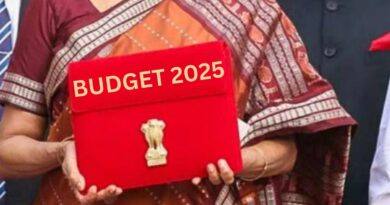This Is The Difference Between Calendar And Financial Year: Easy
Decoding the Difference: Calendar Year vs. Financial Year
I wish you a very happy new year! Did I hear you scoff? Was the new year not 3 months ago, I hear you say? But, I say, it actually is the New Year. Apart from the traditional sense where people celebrate their own version of the New Year in festivals like Baisakhi, Bihu, Pongal, etc., 1st April also marks the start of the financial year in India. In today’s article, I aim to unravel the intricacies of the two timeframes of measurement of a year and understand why they exist. While both serve as measures of time, they differ in their scope, purpose, and implications for individuals and businesses alike.
The calendar year, as its name suggests, follows the conventional Gregorian calendar, spanning from January 1st to December 31st. People widely use it to track events, holidays, and personal milestones, as it aligns with the natural cycle of seasons. For most individuals, the calendar year serves as a reference point for planning, goal-setting, and reflection on achievements.
In contrast, the financial year in India does not adhere to the standard calendar format. Instead, it runs from April 1st to March 31st of the following year. Economic and fiscal purposes primarily adopt this distinct timeframe as the basis for budgeting, taxation, and financial reporting. The financial year plays a crucial role in government budgetary processes, corporate accounting practices, and economic policy formulation.
The adoption of the April-March financial year in India has its roots in colonial history. During British rule, the British government introduced the April–March financial year to align with its administrative and accounting practices. The British fiscal year was synchronized with the agricultural calendar prevalent in India, where the harvesting season typically occurred in the months leading up to April. This legacy persists today, reflecting the continuity of administrative practices established during the colonial era. Over time, the April–March financial year became ingrained in India’s bureaucratic and economic systems, persisting even after independence in 1947.
Moreover, the April-March financial year aligns with agricultural cycles in India, where the harvesting season typically occurs in the months preceding April. This ensures that budgetary allocations and policy measures coincide with agricultural activities, facilitating effective resource allocation and support for the agricultural sector.
In several Indian states, the onset of the April financial year is marked by vibrant festivals that symbolize renewal, prosperity, and cultural heritage.
For example:
- Baisakhi: Celebrated predominantly in Punjab and parts of Haryana, Baisakhi marks the Sikh New Year and the harvest festival. It is a time of joyous festivities, with traditional dances, music, and feasting.
- Puthandu: Observed in Tamil Nadu, Puthandu, also known as Tamil New Year, is celebrated with rituals, prayers, and special meals. Homes are adorned with colorful kolam designs, and families gather to welcome the auspicious beginning of the new year.
- Vishu: Celebrated in Kerala, Vishu heralds the Malayalam New Year and is characterised by the Vishukkani ritual, where auspicious items are arranged and viewed first thing in the morning to ensure prosperity and success in the year ahead.
- Ugadi: Celebrated in Andhra Pradesh, Telangana, and Karnataka, Ugadi marks the Telugu and Kannada New Year. It is observed with traditional rituals, special dishes, and the reading of panchangas (almanacs) to predict the year ahead.
- Bohag Bihu: Celebrated in Assam, Bohag Bihu, also known as Rongali Bihu, marks the Assamese New Year and the onset of the Assamese agricultural calendar. It is celebrated with cultural performances, feasting, and traditional games.
- Pohela Boishakh: Celebrated in West Bengal and parts of Bangladesh, Pohela Boishakh marks the Bengali New Year. It is observed with colorful processions, folk dances, and elaborate feasts showcasing Bengali cuisine.
While many countries align their financial year with the calendar year, several others follow different fiscal cycles based on their unique economic, cultural, and administrative considerations.
For example:
- United States: The financial year in the United States begins on October 1st and ends on September 30th, aligning with the federal government’s budget cycle.
- United Kingdom: The United Kingdom’s financial year runs from April 6th to April 5th of the next year, reflecting the change from the Julian calendar to the Gregorian calendar.
- Japan: In Japan, the financial year spans from April 1st to March 31st, mirroring the April-March cycle prevalent in many Asian countries.
- Australia: Australia’s financial year runs from July 1st to June 30th, reflecting its unique economic and administrative considerations.
- New Zealand: The financial year in New Zealand begins on July 1st and ends on June 30th, aligning with the country’s agricultural cycle and budgetary needs.
- Canada: Canada’s government financial year runs from April 1st to March 31st, similar to the United Kingdom and India. However, the companies can choose their own financial year-end.
- South Africa: South Africa’s financial year aligns with the calendar year, running from March 1st to February 29th. This synchronicity simplifies financial planning and reporting for businesses and government agencies.
- Pakistan: Pakistan follows the July-June financial year model. This alignment facilitates coordination between budgetary allocations and agricultural activities in the region.
- Singapore: Singapore’s financial year spans from April 1st to March 31st, akin to the April-March cycle observed in India and the United Kingdom. This timeframe facilitates economic planning and policy implementation in the city-state.
These examples underscore the global diversity in financial timekeeping practices, shaped by historical legacies, economic imperatives, and administrative considerations. Ultimately, whether marked by colourful festivals or budgetary deliberations, the passage of time remains a universal constant, guiding human endeavours and shaping collective destinies.
So, now that we know a little more about the different calendar and financial years, I wish you a very happy new year once again.





Very well explained
Thanks Madam for the exclusive information. You have brought it so well and in a very simple manner easy to understand. Good article
Thanks Madam for the informative article
Good and useful article